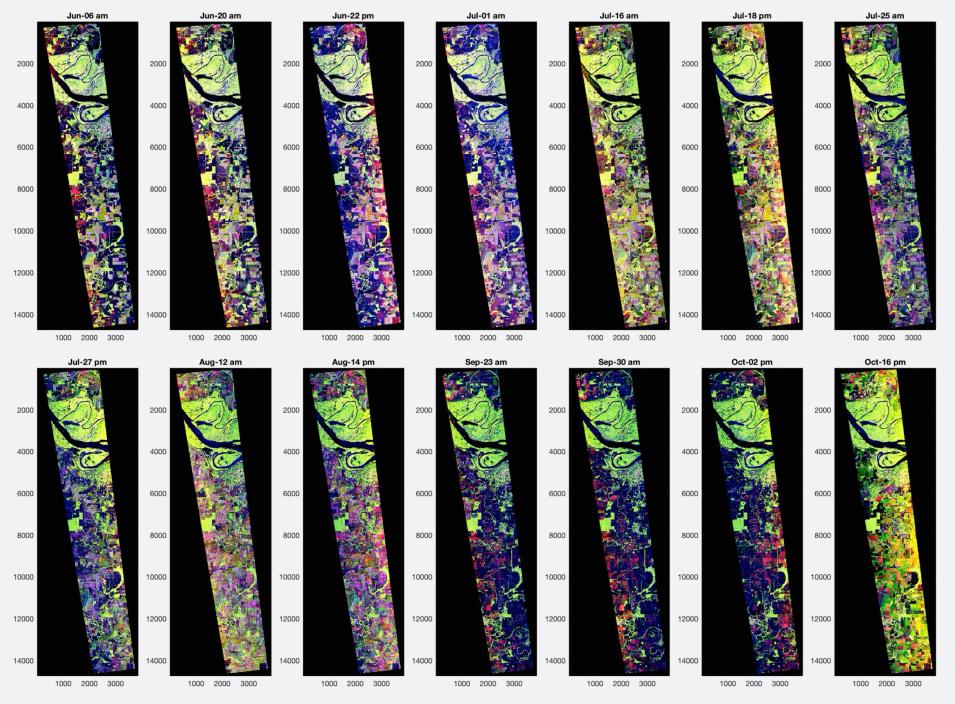Dr. Paul Siqueira, Professor of Electrical and Computer Engineering, and Co-Director of the Microwave Remote Sensing Laboratory; University of Massachusetts, Amherst, MA
Research interests: Exploring and developing new uses for Synthetic Aperture Radar (SAR) for environmental remote sensing, SAR processing, and ecosystems science.
Research highlights: The one true constant on Earth is change. Some of these changes are relatively rapid, such as new land formed by flowing lava as it cools and solidifies or land deformation caused by the sudden release of pressure holding tectonic plates in place. Some changes, however, are barely noticeable until the change already is occurring, such as a shift in climate over many years leading to changes in the range of plant and animal species along with changes in ecosystem structure and function.
The ability to track environmental change from space using instruments aboard orbiting satellites provides the spatial coverage to study the planet as an integrated system. This is especially important in studies involving entire biomes or ecosystems, which can cover large areas of Earth or discrete areas along a common latitude. Thanks to a continuous record of satellite-acquired Earth observations extending back 40 years or more, much of which is available through NASA’s Earth Observing System Data and Information System (EOSDIS), changes to ecosystems over time can be detected, measured, and tracked on a planetary scale. When these data are combined with data acquired from ground-based instruments or airborne sensors, a more complete picture of our planet and its systems is being revealed.
A key technology enabling large-scale environmental research is Synthetic Aperture Radar (SAR). Dr. Paul Siqueira is applying his expertise in microwave sensor instrument development, SAR processing, and ecosystems science to several upcoming and future orbital missions designed to use SAR technology to assess our changing planet with a greater precision than ever before.
SAR is an active radar system, and collects data by bouncing a microwave radar signal off a surface to acquire data about that surface’s physical properties (passive radar systems, such as a radiometer, detect radiated energy and do not send out a radar pulse). Since SAR relies on radar returns to create imagery, it does not need outside illumination. In addition, the wavelengths used for creating SAR imagery can penetrate clouds and smoke to detect properties of tree canopies and soils. This enables SAR imagery to be created day or night, rain or shine across many different ecosystems. NASA’s repository for SAR data in the EOSDIS collection, and an important source for the SAR data used by Siqueira, is NASA's Alaska Satellite Facility Distributed Active Archive Center (ASF DAAC) at the University of Alaska Fairbanks.
Siqueira is the Ecosystems Science Team Lead for the upcoming joint NASA/Indian Space Research Organization (ISRO) Synthetic Aperture Radar (NISAR) mission, which is scheduled for launch in 2022. NISAR will be the first satellite to systematically map Earth using two different SAR frequencies – an L-band instrument developed by NASA and an S-band instrument developed by ISRO. NISAR will image the entire Earth every 12 days to support research in four primary science areas: ecosystems, hydrology, natural hazards, and the cryosphere. NISAR data will be freely available through ASF DAAC.
NISAR is the latest mission to incorporate L-band SAR, which has a long history of use in Earth observing satellites. The first civilian L-band SAR flew in 1978 aboard the Seasat satellite (operational June to October 1978), and L-band SAR has been used on numerous international Earth observing missions. Its approximately 24 cm-long wavelength (the second longest of common SAR bands) enables L-band SAR to penetrate the tops of forest canopies to reveal above-ground biomass, making it very useful for ecosystem studies. As noted by the Committee on Earth Observation Satellites (CEOS), a consistent archive of L-band SAR data dating back to the mid-1990s exists for most areas of the world.

